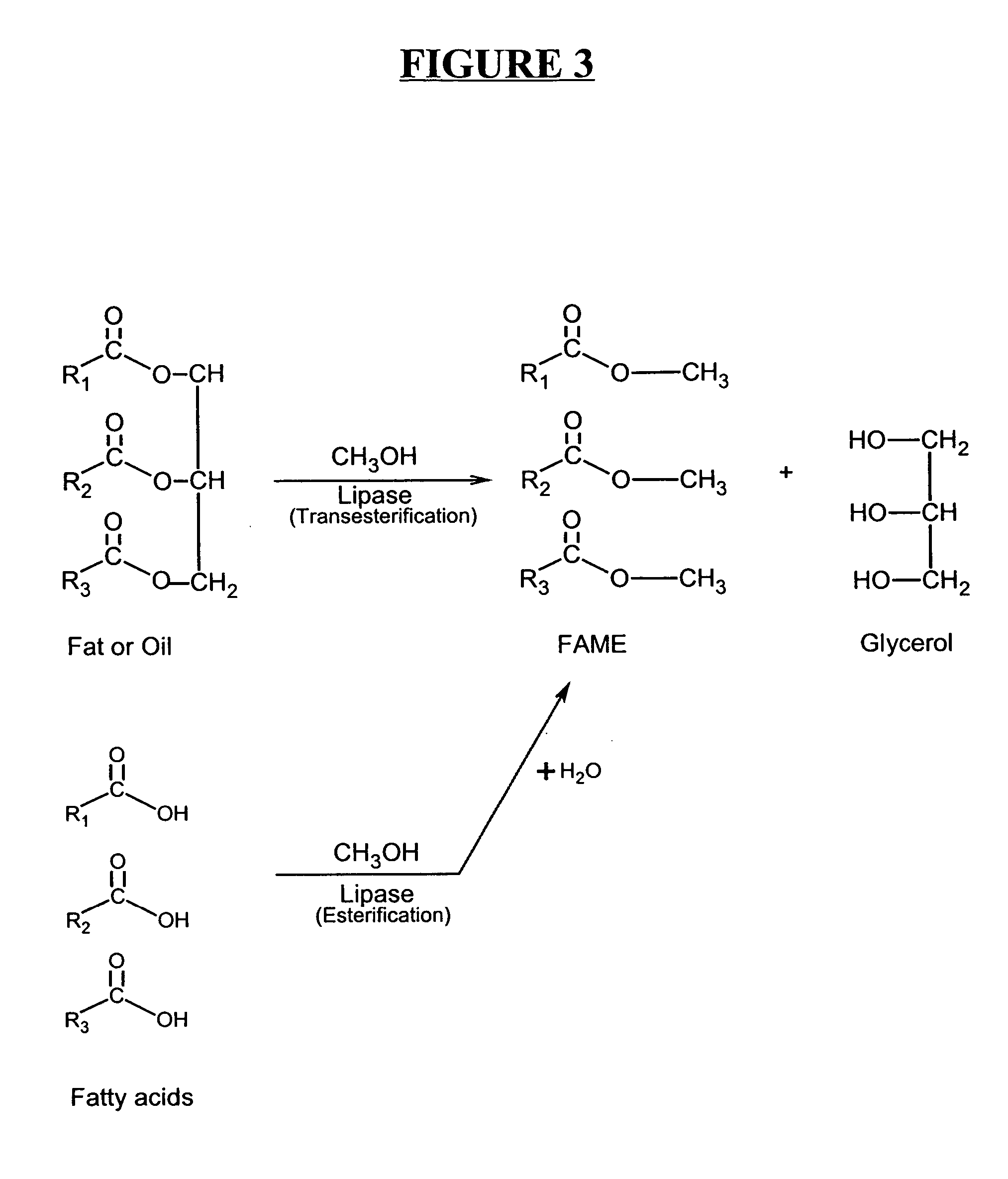Production of biodiesel and other valuable chemicals from wastewater treatment plant sludges
- Summary
- Abstract
- Description
- Claims
- Application Information
AI Technical Summary
Benefits of technology
Problems solved by technology
Method used
Image
Examples
examples
[0080] The following is a non-limiting example of the present invention as applied to wastewater sludges produced from a sewage treatment facility. Depending on the water content and type of extraction process utilized, some of the processing steps described below may not be necessary.
[0081] Sludge is collected from various sources within the wastewater biological treatment plant. Example sludge sources to be utilized include primary sludge, skimmer residuals, grit, secondary or waste sludge, and biosolids. Locations for removal of these sludges from the sewage plant will vary with the layout of the actual plant; however, in most cases, it is planned that collection after dewatering steps (belt presses, centrifuges, grit chambers, clarification, etc.) will be targeted to reduce the amount of water having to be handling during processing.
[0082] Depending on the type of chemical extraction process selected (based on the source of the sludge) and the dewatering effort expended by the...
PUM
 Login to View More
Login to View More Abstract
Description
Claims
Application Information
 Login to View More
Login to View More - R&D
- Intellectual Property
- Life Sciences
- Materials
- Tech Scout
- Unparalleled Data Quality
- Higher Quality Content
- 60% Fewer Hallucinations
Browse by: Latest US Patents, China's latest patents, Technical Efficacy Thesaurus, Application Domain, Technology Topic, Popular Technical Reports.
© 2025 PatSnap. All rights reserved.Legal|Privacy policy|Modern Slavery Act Transparency Statement|Sitemap|About US| Contact US: help@patsnap.com



